| By Bob Weaver 2000
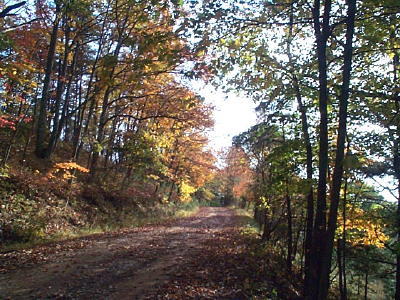
The Husk connects the Village of Hur and Richardson on the West
Fork
Among my favorite ridge runnin' places is "The Husk" between the Village of
Hur and the long-gone Village of Richardson.
It was the home of "Snuff Box
Glory," a well-told tale found under People, Humor and History, mixing education, religion and snuff.
Most notable
on the ridge is the absence of people and homes, and the presence of at
least seven cemeteries.
(Here in 2021, for the first time in about 75 years, we have two new settlers on the ridge)
In the first fifty years of last the century, more than
forty families resided on the ridge or in the hollows on the either side. Most
left shortly after WW II to find work in Ohio.
It is pure country, a road less traveled, with a parade of foliage, pastures and
trees and pleasant vistas of Calhoun, Roane and Wirt county hills.
The
Husks, Coons, Carpenters, Wrights, Tuttles and Goughs are long gone, many
of them at rest on the ridge.
Civil War vet Paulser McCune hid in a cave at
the foot of Paulser Knob after he deserted the military, and is buried in the
McCune Cemetery with a hand-full of his relatives.
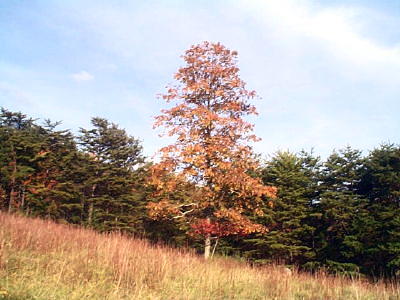
The persimmon tree attracts black bear which
"waller" the grass for the
tasty fruit
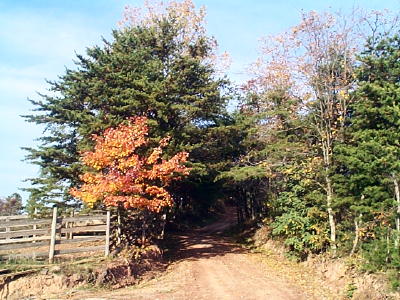
Red clay road now has some rock for easier traveling
It is the Husk family, a hardy and stalwart bunch, whose presence claims
most of the memories. They landed on some of the roughest land in Calhoun
County, steep, rocky and barely able to produce crops.
Moving rocks by the
tons, creating rock fences, they often farmed against the hillsides in long
furrows. Many of them built houses in the narrow hollows, where the sun
shown but a few hours a day.
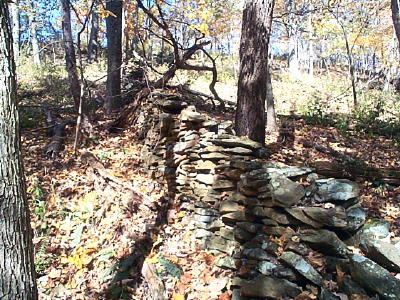
The Husk's made rock fences, about 1900
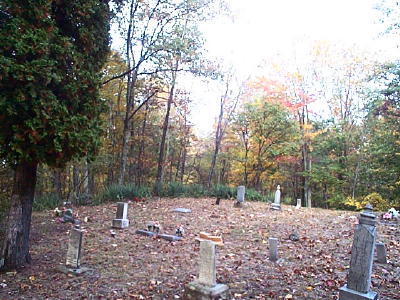
A few of the Husks rest along the dusty road
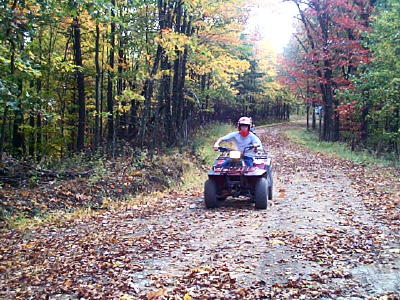
A great 4-wheeler "highway"
They walked and rode horses, even through the 1950's. The ridge road was
red clay mud with deep ruts and nasty mud holes, treacherous territory for a
car.
Most months it could not be traveled, and in winter deep snow drifts
and chilling winds swept across the ridge, resulting in deaths by freezing.
Amos and Bethel Carpenter Lamp tried to survive in the old Godfrey Fritz
barn in 1947, and never made it.
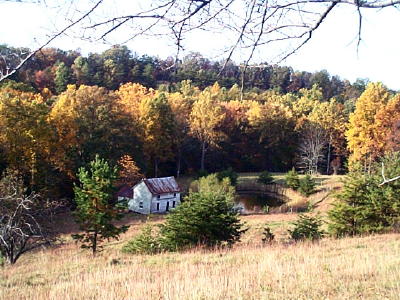
The Godfrey Fritz homestead
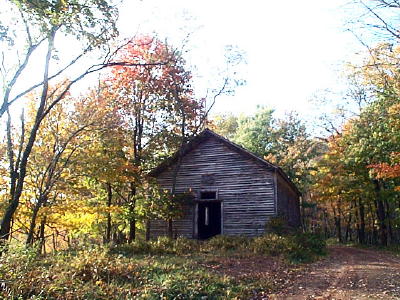
Tuttle Hill Southern Baptist Church had a short-lived history in the
1950's
The Fritz's, German immigrants, like several other families who moved to the
greater Hur-Richardson area, farmed on The Husk. Before their death in the
late 1940's, Godfrey and Bertha Wallbrown Fritz moved to the Village of Hur
to be cared for by their schoolteacher daughter Lizzie Reynolds, mother of
well-known Calhoun educator Eugene Reynolds.
Mary Husk Bryner, who died more recently in her late nineties, recalled hard
times near The Husk. Her family fought starvation in the early part of the
1900's "eating snow birds and weed soup," just to make it through.
The Tuttle Hill school was the center of education, often doubling as a
church house. On the Richardson end of the ridge is the site of the
Richardson one-room school - Pine Grove, where students walked up the steep hillside
from the long-gone village.
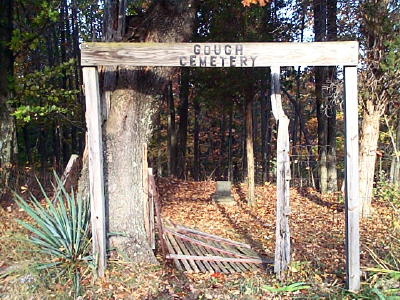
The Gough Cemetery, one of six on The Husk
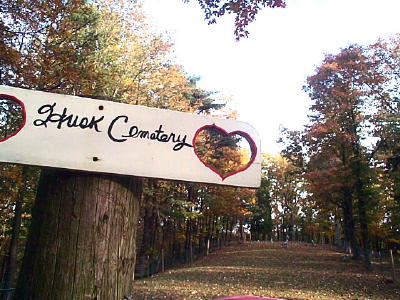
The Husk Cemetery near Coon Ridge
Richardson was a well-populated village along the West Fork of the Little
Kanawha, known for its grist and lumber mill, stores, blacksmith shop,
physicians, hotel and even a barber shop. In 1905 it became a center for gas
and oil production, and was the site of a compressor station through the
1950's.
Yesterday I traveled out The Husk, one of hundreds of trips during my
lifetime, to be fascinated once more by its beauty, resolving to respect the
place and its settlers.
In this troublesome time for America, I know why the
people of Sunny Cal and those residing in the mountains of West Virginia
cling close to these holy altars like The Husk.
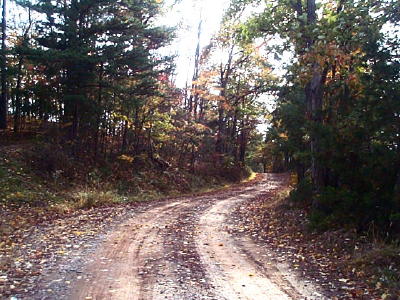
It is a holy altar - The Husk
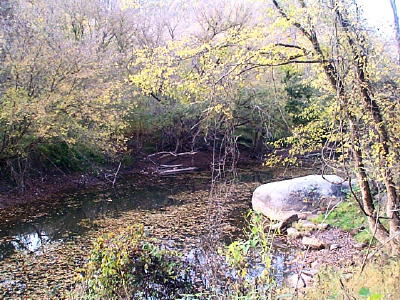
The "Mose Hole" near Richardson
| 


